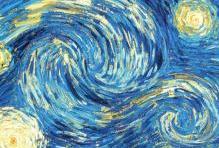Computational topology saw three major developments in recent years: persistent homology, Euler calculus and Hodge theory. Persistent homology extracts stable homology groups against noise; Euler Calculus encodes integral geometry and is easier to compute than persistent homology or Betti numbers; Hodge theory connects geometry to topology via optimization and spectral method. All three techniques are related to Morse theory, which is inspiring new computational tools or algorithms for data analysis.
Computational topology has inspired a number of applications in the last few years, including game theory, graphics, image processing, multimedia, neuroscience, numerical PDE, peridynamics, ranking, robotics, voting theory, sensor networks, and natural language processing.
Workshop Goal
This workshop will focus on the following question: Which promising directions in computational topology can mathematicians and machine learning researchers work on together, in order to develop new models, algorithms, and theory for machine learning? While all aspects of computational topology are appropriate for this workshop, our emphasis is on topology applied to machine learning -- concrete models, algorithms and real-world applications.
Format
This is a one day workshop at
ICML 2014 in Beijing, China on Wednesday June 25, 2014.
Organizers
Contact:
topologyicml2014@gmail.com
